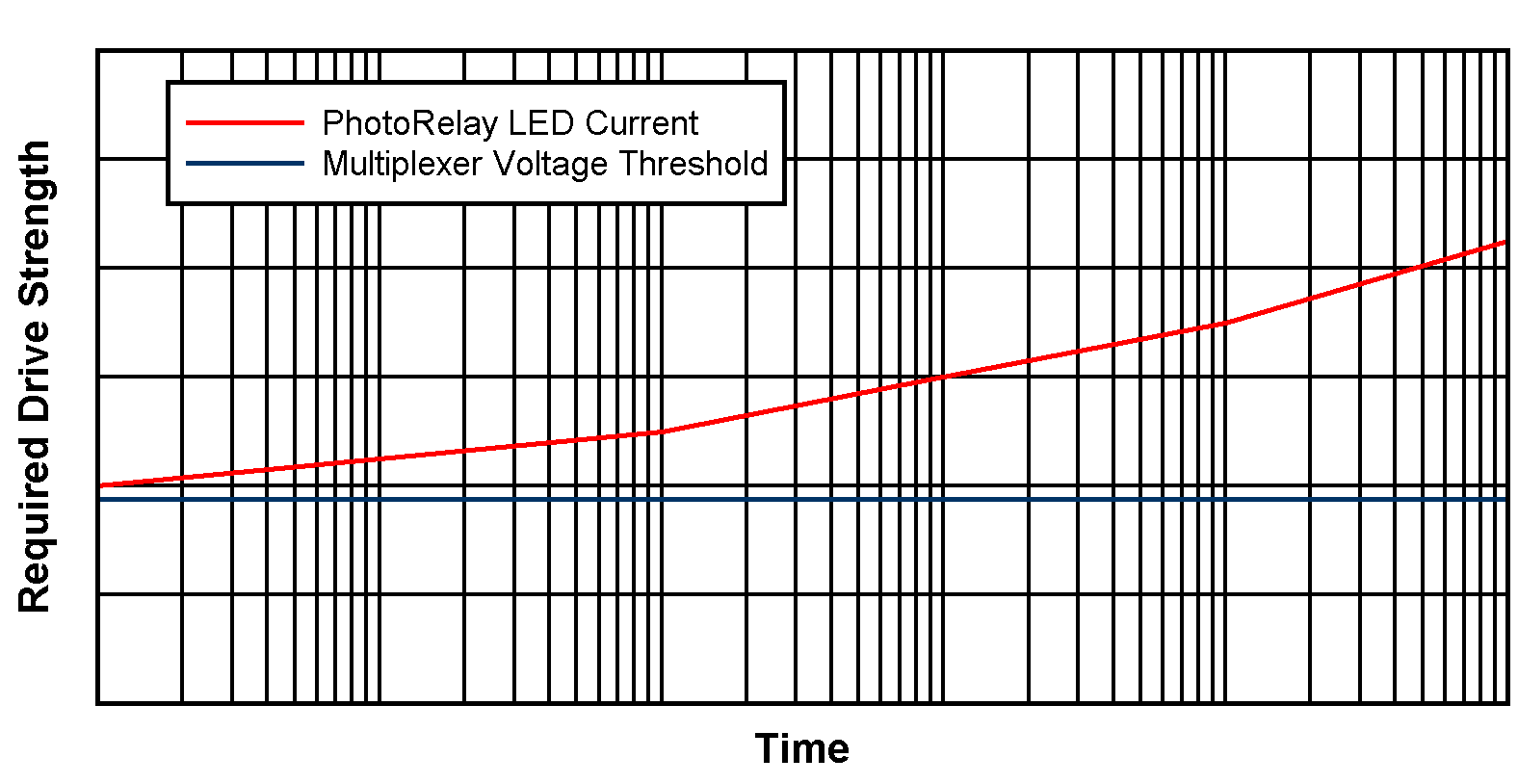SCDA036A May 2022 – June 2024 TMUX8212 , TMUXS7614D
- 1
- Abstract
- Trademarks
- 1 Size Requirement
- 2 Reliability Over Time
- 3 Power Consumption
- 4 Switching Speed and Hot Switching
- 5 Signal Isolation
- 6 Capacitance
- 7 On-Resistance and Flatness
- 8 Leakage Current
- 9 Integrated Protection
- 10Latch-up Immunity
- 11Galvanic Isolation
- 12Conclusion
- 13References
- 14Revision History
2 Reliability Over Time
Photorelays offer a clear improvement in reliability over mechanical relays, since there are no moving parts. Photorelays are controlled optically through an LED. Typically, this LED will degrade over time more quickly than the switch itself depending on temperature, forward current, switch speed, and so on. As the LED degrades, more current is needed to fully turn on the photorelay. This can necessitate system changes and increase system size to compensate for this reliability. TI multiplexer’s reliability is not dependent on the drive strength of the control or switching frequency. As long as the voltage driving the multiplexer is above the threshold and within the operating conditions of the device, the switch will always turn on. This threshold voltage does not change over time, unlike the drive current of an LED.
 Figure 2-1 Required Drive Strength Over
Time
Figure 2-1 Required Drive Strength Over
Time Additionally, multiplexers will have additional ESD protection to protect the device during handling and assembly. Often, photorelays do not have this added integration and need external components to accomplish the same level of protection.